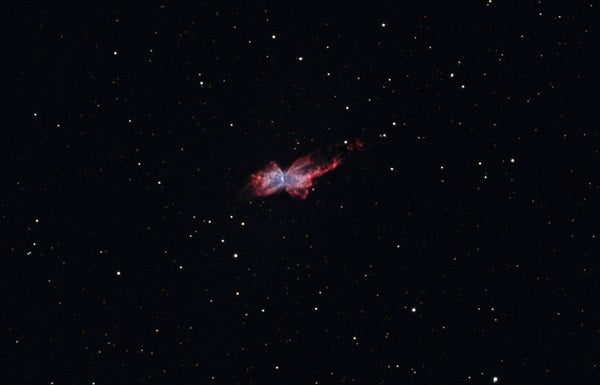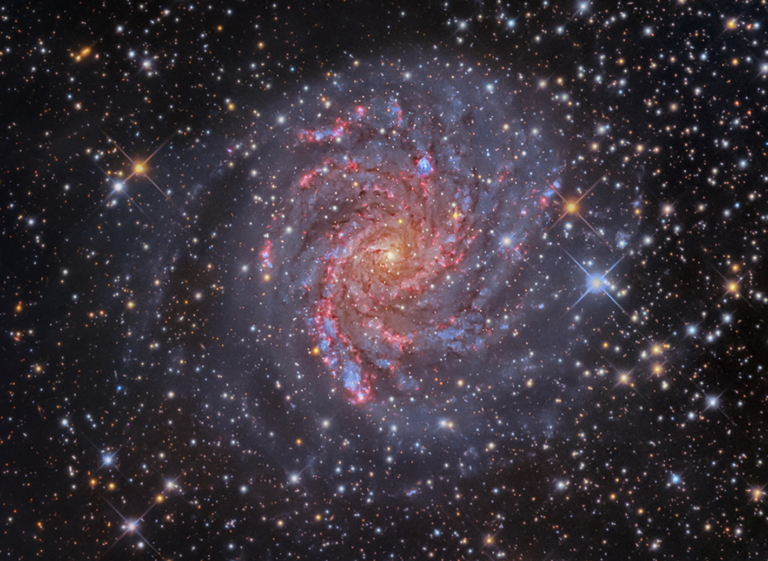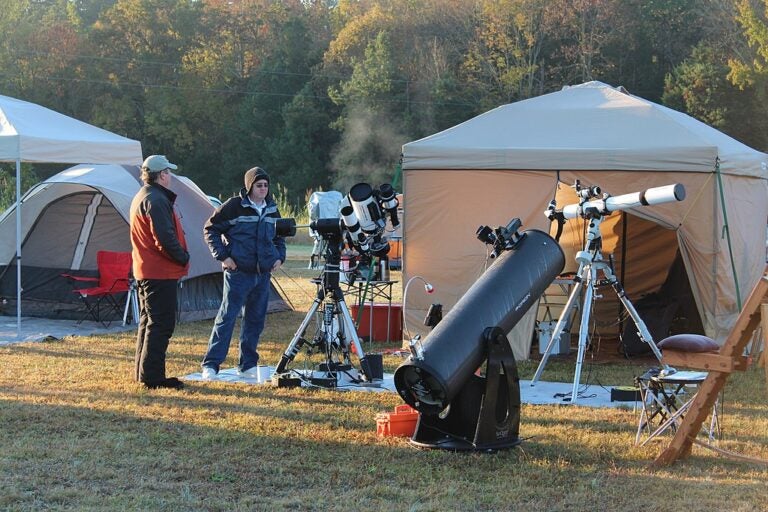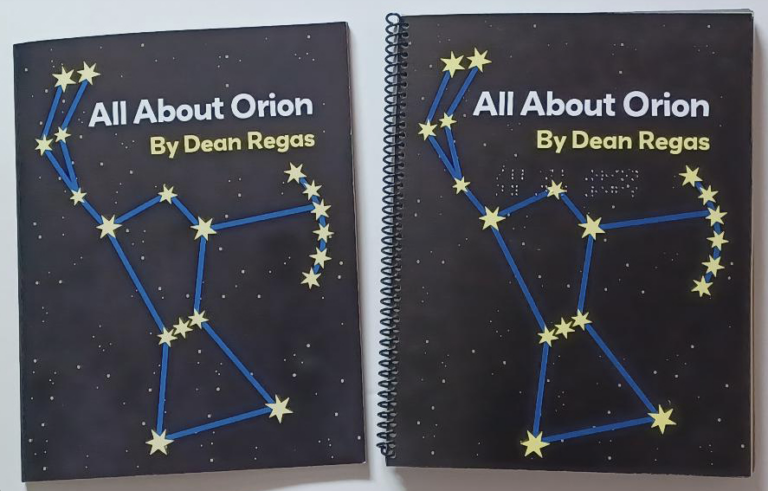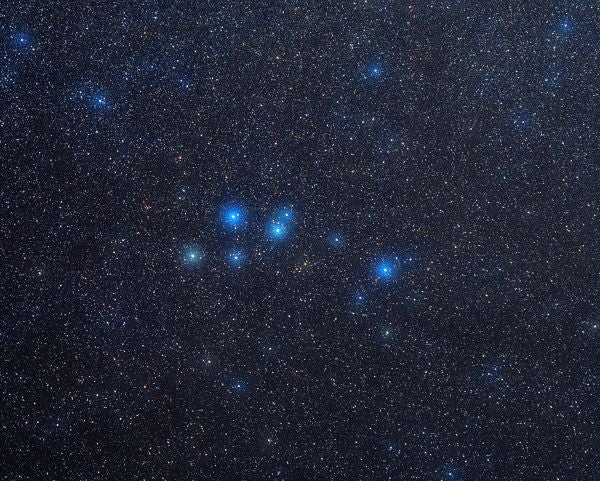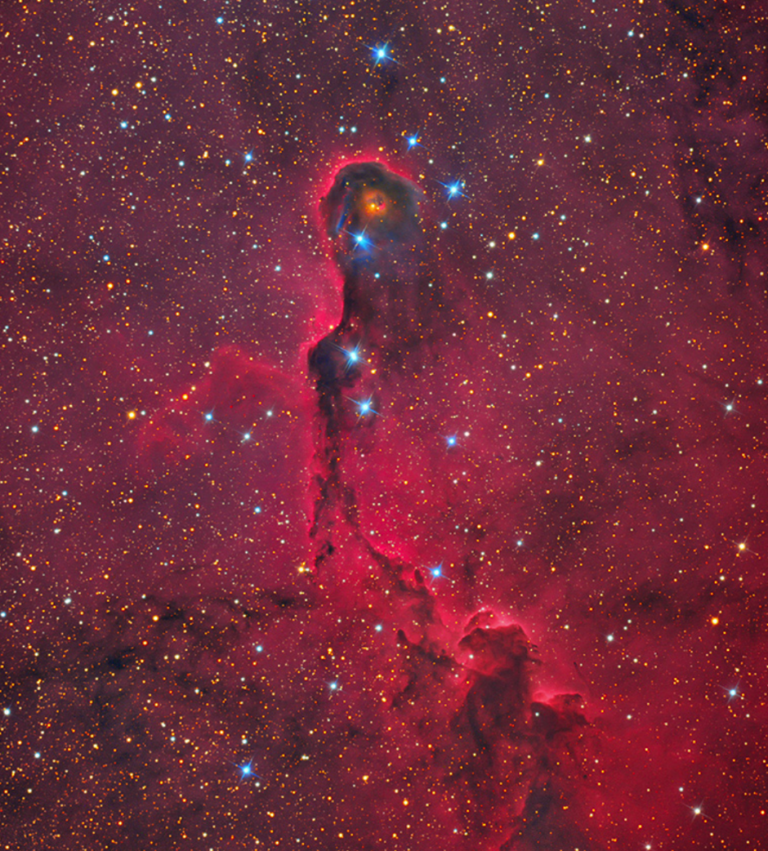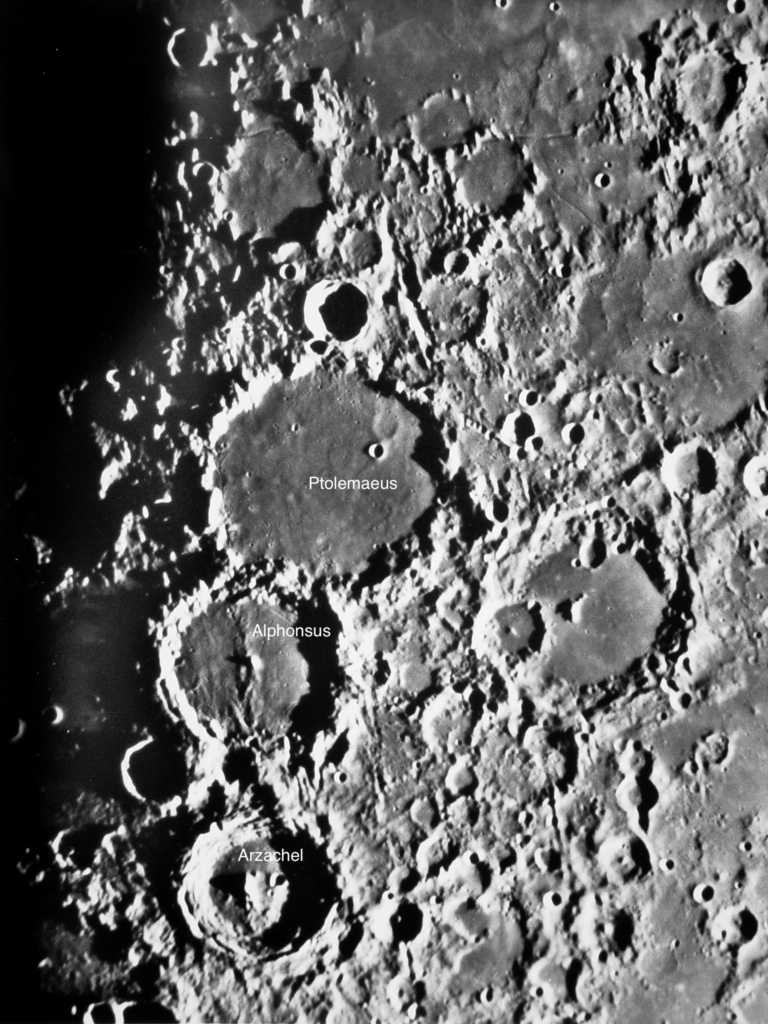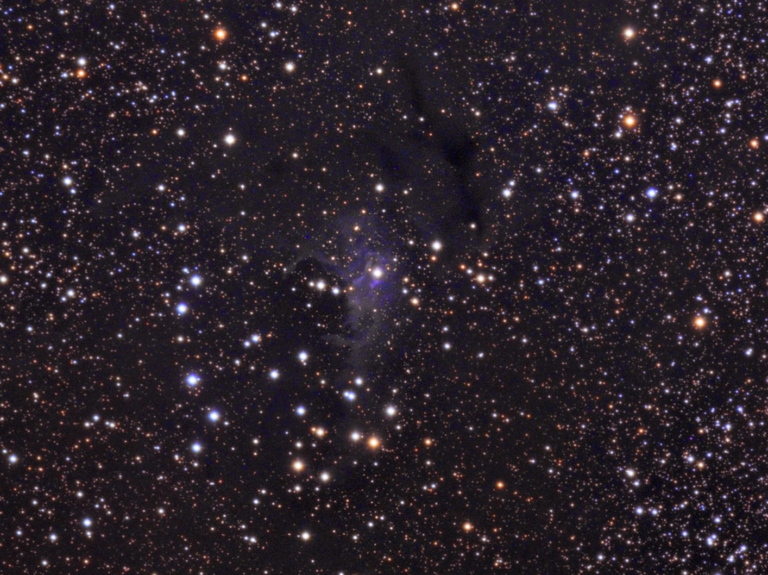Amateur astronomers named the Bug Nebula (NGC 6302) for its insectlike shape. But because the Bug’s apparent size is only 2′, that shape is all they saw. Recent pictures taken with the Hubble Space Telescope have revealed much more detail. Now NGC 6302 is often called the Butterfly Nebula.
Whatever name you give it, NGC 6302 is on a number of top 10 lists — no surprise, considering its visual magnitude of 10.1 makes it one of the brightest planetary nebulae known. It’s also among the most massive. And its central star has a surface temperature greater than 450,000 degrees Fahrenheit (250,000 degrees Celsius), making it one of the hottest stars in the universe.
That central star, by the way, wasn’t discovered until 2009. Astronomers didn’t detect it because it’s so hot that most of its output is ultraviolet radiation, which the surrounding cloud of gas absorbs and then reemits as visible light. The lack of visible light coming from the star, coupled with its bright surroundings, made spotting it difficult. It wasn’t until astronauts installed the Wide Field Camera 3 onto Hubble that researchers finally saw it.
American astronomer Edward Emerson Barnard discovered NGC 6302 through a 5-inch refractor in 1880. The planetary lies some 3,400 light-years away in the constellation Scorpius. To find it, point your telescope 3.9° west of magnitude 1.6 Shaula (Lambda [λ] Scorpii).
If you observe NGC 6302 through an 8-inch telescope with an eyepiece that magnifies between 50 and 100 times, it looks like a galaxy that stretches east-west and is four times as long as it is wide. At powers above 150x, you’ll be able to see the two lobes on either side of the core. The one on the western side is easiest to see. It has a tapered end. The faint arm to the east is a more difficult catch.
Make sure to explore Astronomy‘s full list of 101 cosmic objects you must see. New entries will be added each week throughout 2022.

